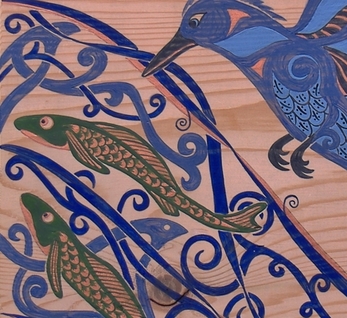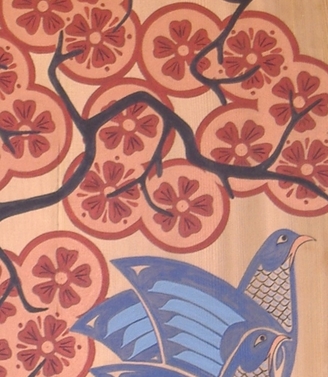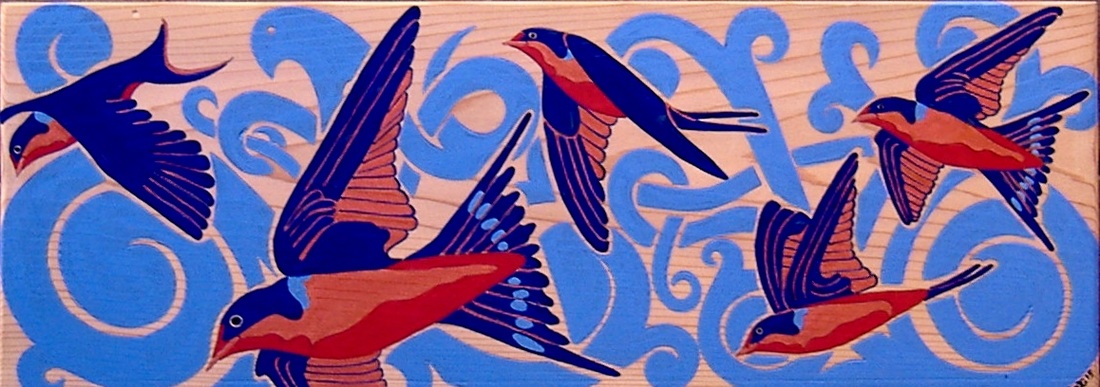Leigh and I have been so lucky to have been able to live in rural Washington State for the past 35 years—first out at Neah Bay on the coast, and now in La Conner and in the Skagit Valley. We have been able to enjoy the beauty and serenity of nature on a daily basis and to adjust to the rhythms of the seasons and the tides. And in response, I have felt the need to communicate this spiritual affinity for our natural surroundings through the medium of painting on cedar. Painting on cedar, feeling the grain as it interacts with my pencil or brush, and smelling the wonderful and distinct aroma that cedar can emit acts to connect me to the once monumental tree from which the wood originated. This awareness requires that I “do justice” to the wood by trying to design and paint its surface to the best of my abilities. This love of and affinity for nature is the reason why I am so influenced (and indebted) to Northwest Coast Native, Celtic, and Japanese art in all that I attempt to do.
Nature was the primary focus of Northwest Coast Native art and it acted as a way to connect the world in which people lived with the supernatural realm. Artistic motifs of specific animals were associated with individual families and as such were owned by them. Only those families had the right to display those motifs, and they were interwoven with the family’s names, songs, and dances. Thus, a strong spiritual connection exists between Northwest Coast Native art and the natural world. Similarly, natural motifs in Celtic art corresponded to early pagan and later Christian spirituality. Celtic entrelac, knot-work and spirals symbolized the interconnectedness of both the natural and the spiritual worlds.
Through the power of DNA, life itself is very plastic and has the built-in ability to quickly change to meet changing physical conditions. The earth’s first great environmental catastrophe occurred billions of years ago brought on by the creation of an oxygen-rich atmosphere. However this catastrophe eventually paved the way for most of the complex life forms we cherish today. In the future life will continue to thrive on Earth regardless of what we humans do. However, if we don’t act, we just might not be there to witness and glory in it. All we can do, as a society and as individuals, is to make the effort to correct this imbalance. Thus, in my own way and through my paintings, I want to show a symbolic representation of the beauty that exists in nature. As a painter, I will continue to celebrate the beauty and diversity of nature and to celebrate those cultures and artists whose reverence for nature continues to inspire.



 RSS Feed
RSS Feed